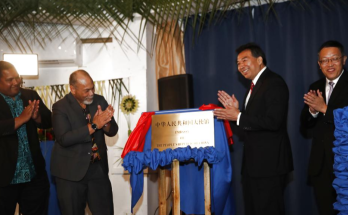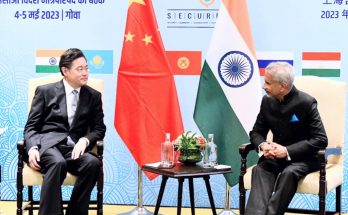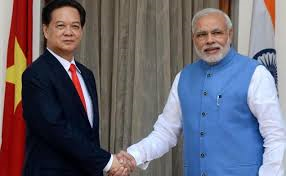 With China closely watching amid the ongoing ferment in the South China Sea, Prime Minister Narendra Modi will head to Vietnam, the first stop of his extended overseas trip which will impart a greater strategic traction to India’s Act East policy at the dual ASEAN and EAS summits in Laos.
With China closely watching amid the ongoing ferment in the South China Sea, Prime Minister Narendra Modi will head to Vietnam, the first stop of his extended overseas trip which will impart a greater strategic traction to India’s Act East policy at the dual ASEAN and EAS summits in Laos.
Why Vietnam Matters
The importance of Mr Modi’s maiden visit to Vietnam, an emerging ASEAN economy and a crucial plank in the maritime stability in the region, can’t be overstated. Over the years, Vietnam has morphed into a trusted strategy ally of India due to a host of reasons, with China’s assertive posturing in South China Sea driving the two countries in a closer embrace. In so far as history goes, PM Modi’s day-long sojourn in Vietnam is the first prime ministerial visit from India in 15 years and coincides with the 10th anniversary of strategic partnership and 45th anniversary of the establishment of diplomatic ties between the two countries. The growing importance of Hanoi in New Delhi’s strategic calculus is also evident in the choice of Vietnam as the destination for a bilateral visit as his other stops on the week-long tour are primarily for multilateral summits (G20 summit in Hanzhou- September 4-5; and India-ASEAN and EAS summits in Laos September 6-8).
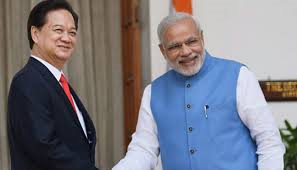 Recent developments in the region have only accentuated the importance of India-Vietnam relations. The timing of the visit is critical as it comes in the wake of an adverse verdict by the Permanent Court of Arbitration rejecting China’s historic rights to the South China Sea, underpinned by the so-called nine-dash line, and Beijing’s rejection of the verdict, which has put in the forefront issues regarding maritime stability, freedom of navigation and international law of the sea. China’s militarization of South China Sea and its continuing opposition to India’s bid for membership of the Nuclear Suppliers Group (NSG) have become source of dissonance to varying degree in India-China relations. Against this backdrop, the leaders of India and Vietnam will take a larger view and will be looking to shape a balanced and inclusive order in the region. With a growing chorus from Vietnam and other friendly countries in ASEAN egging on India to play the role of a balancing power in the Asia-Pacific region, PM Modi’s visit will see the infusion of more depth and substance in the burgeoning India-Vietnam strategic partnership.
Recent developments in the region have only accentuated the importance of India-Vietnam relations. The timing of the visit is critical as it comes in the wake of an adverse verdict by the Permanent Court of Arbitration rejecting China’s historic rights to the South China Sea, underpinned by the so-called nine-dash line, and Beijing’s rejection of the verdict, which has put in the forefront issues regarding maritime stability, freedom of navigation and international law of the sea. China’s militarization of South China Sea and its continuing opposition to India’s bid for membership of the Nuclear Suppliers Group (NSG) have become source of dissonance to varying degree in India-China relations. Against this backdrop, the leaders of India and Vietnam will take a larger view and will be looking to shape a balanced and inclusive order in the region. With a growing chorus from Vietnam and other friendly countries in ASEAN egging on India to play the role of a balancing power in the Asia-Pacific region, PM Modi’s visit will see the infusion of more depth and substance in the burgeoning India-Vietnam strategic partnership.
Bolstering Defence Ties
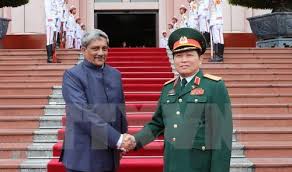 PM Modi’s visit to Vietnam will put the spotlight on an intersection of India’s Act East Policy and Hanoi’s Act West Policy as they deepen their military and economic partnership. Building upon the ongoing transformation of the defence relationship, one can expect India to play a bigger role in Vietnam’s military modernisation. In the military sphere, there is a convergence of interests and a demand-supply fit which will ensure that the relationship keeps growing. India has already provided $100 million line of credit to Vietnam which is being used by Vietnam for procuring offshore vessels.
PM Modi’s visit to Vietnam will put the spotlight on an intersection of India’s Act East Policy and Hanoi’s Act West Policy as they deepen their military and economic partnership. Building upon the ongoing transformation of the defence relationship, one can expect India to play a bigger role in Vietnam’s military modernisation. In the military sphere, there is a convergence of interests and a demand-supply fit which will ensure that the relationship keeps growing. India has already provided $100 million line of credit to Vietnam which is being used by Vietnam for procuring offshore vessels.
During Mr Modi’s visit, India is expected to provide a fresh Line of Credit, which could be packaged as development assistance, but may be harnessed by Vietnam for its ongoing military modernisation. One can also expect progress in ongoing discussions for the sale of anti-submarine torpedo Varunastra and other high-value weaponry. These discussions will be guided by the May 2015 joint vision statement on defence cooperation from 2015-20 to expand defence ties, including naval cooperation between the two countries.
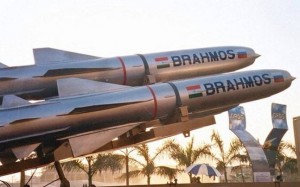 The big decision remains, and speculation continues to proliferate about whether India will sell BrahMos supersonic missiles to Vietnam, a move that will clearly antagonise Beijing. India’s induction into the Missile Technology Control Regime (MTCR) has cleared the last hurdle in the way of selling BrahMos missiles not just to Vietnam, but also to other friendly countries. The sale of BrahMos was discussed by India’s Defence Minister Manohar Parrikar with his Vietnamese counterpart General Ngo Xuan Lich in June, and is expected to see concrete results during PM Modi’s visit
The big decision remains, and speculation continues to proliferate about whether India will sell BrahMos supersonic missiles to Vietnam, a move that will clearly antagonise Beijing. India’s induction into the Missile Technology Control Regime (MTCR) has cleared the last hurdle in the way of selling BrahMos missiles not just to Vietnam, but also to other friendly countries. The sale of BrahMos was discussed by India’s Defence Minister Manohar Parrikar with his Vietnamese counterpart General Ngo Xuan Lich in June, and is expected to see concrete results during PM Modi’s visit
China Factor
China will be the elephant in the room when PM Modi is closeted with Vietnam’s top leaders in Hanoi. Vietnam has protested against Beijing’s rejection of the Hague tribunal’s ruling, a position that is broadly in harmony with India’s exhortation to China to show utmost respect for the tribunal’s ruling. The two countries will probably avoid getting entangled in containment games, but one can expect frank discussions on the latest situation in South China Sea. The joint statement will reflect this convergence of perspectives on freedom of navigation, the imperative of upholding a rules-based international order and closer collaboration in maintaining peace and security in the Indian Ocean and the Asia-Pacific region, on the lines of India-US joint statement and India-Vietnam joint statement.
Talking of strategic chessboard, a new construct has emerged in influential circles about the creation of India-Vietnam axis to counter the China-Pakistan axis. This theory has its attractions, but needs several caveats. India is not in the business of containing China by using Vietnam as it’s not a transactional or patron-client relationship, but is informed by a shared outlook on regional stability.
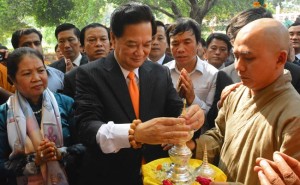 There are fundamental differences between the China-Pakistan and the India-Vietnam relations. India is not supporting any overt anti-China agenda in Vietnam and neither is Vietnam using terrorism against China, which Pakistan does against India. On the contrary, India-Vietnam relations are animated by a shared perspective on issues relating freedom of navigation, international law and regional stability. The containment theory, in short, has its temptations, but has also severe limitations.
There are fundamental differences between the China-Pakistan and the India-Vietnam relations. India is not supporting any overt anti-China agenda in Vietnam and neither is Vietnam using terrorism against China, which Pakistan does against India. On the contrary, India-Vietnam relations are animated by a shared perspective on issues relating freedom of navigation, international law and regional stability. The containment theory, in short, has its temptations, but has also severe limitations.
Heart & Mind
Moving beyond merely strategic calculations, what imparts an emotional resonance to India-Vietnam relations is deeply felt solidarity and connections of heart and mind, as exemplified in spiritual linkages of Buddhism and the enduring popularity of Indian films among the Vietnamese people.
Instead of getting lost in a strategic maze, the two countries are rightfully focusing on enhancing people-to-people bonds through travel, tourism and cultural contacts. Most Indian tourists go to Thailand and Singapore in 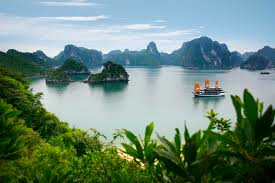 Southeast Asia, but the beauty of Vietnam remains to be discovered. Taking strategy is no excuse for not seeing the country with your own eyes. It’s time to open the unusual door, see more and open new vistas in this mutually invigorating partnership.
Southeast Asia, but the beauty of Vietnam remains to be discovered. Taking strategy is no excuse for not seeing the country with your own eyes. It’s time to open the unusual door, see more and open new vistas in this mutually invigorating partnership.
Author Profile

- Manish Chand is Founder-CEO and Editor-in-Chief of India Writes Network (www.indiawrites.org) and India and World, a pioneering magazine focused on international affairs. He is CEO/Director of TGII Media Private Limited, an India-based media, publishing, research and consultancy company.
Latest entries
 India and the WorldMarch 3, 2024India-Denmark Connect: Red carpet for Indians to Red Sea cooperation
India and the WorldMarch 3, 2024India-Denmark Connect: Red carpet for Indians to Red Sea cooperation India and the WorldFebruary 17, 2024Munich Security Conference: Jaishankar, Blinken focus on Red Sea, Middle East
India and the WorldFebruary 17, 2024Munich Security Conference: Jaishankar, Blinken focus on Red Sea, Middle East India and the WorldFebruary 14, 2024Munich Security Conference report: Migration, war top security threats
India and the WorldFebruary 14, 2024Munich Security Conference report: Migration, war top security threats India and the WorldJanuary 23, 2024With “Ram to Rashtra” mantra, Modi consecrates Ram temple for national renewal
India and the WorldJanuary 23, 2024With “Ram to Rashtra” mantra, Modi consecrates Ram temple for national renewal





